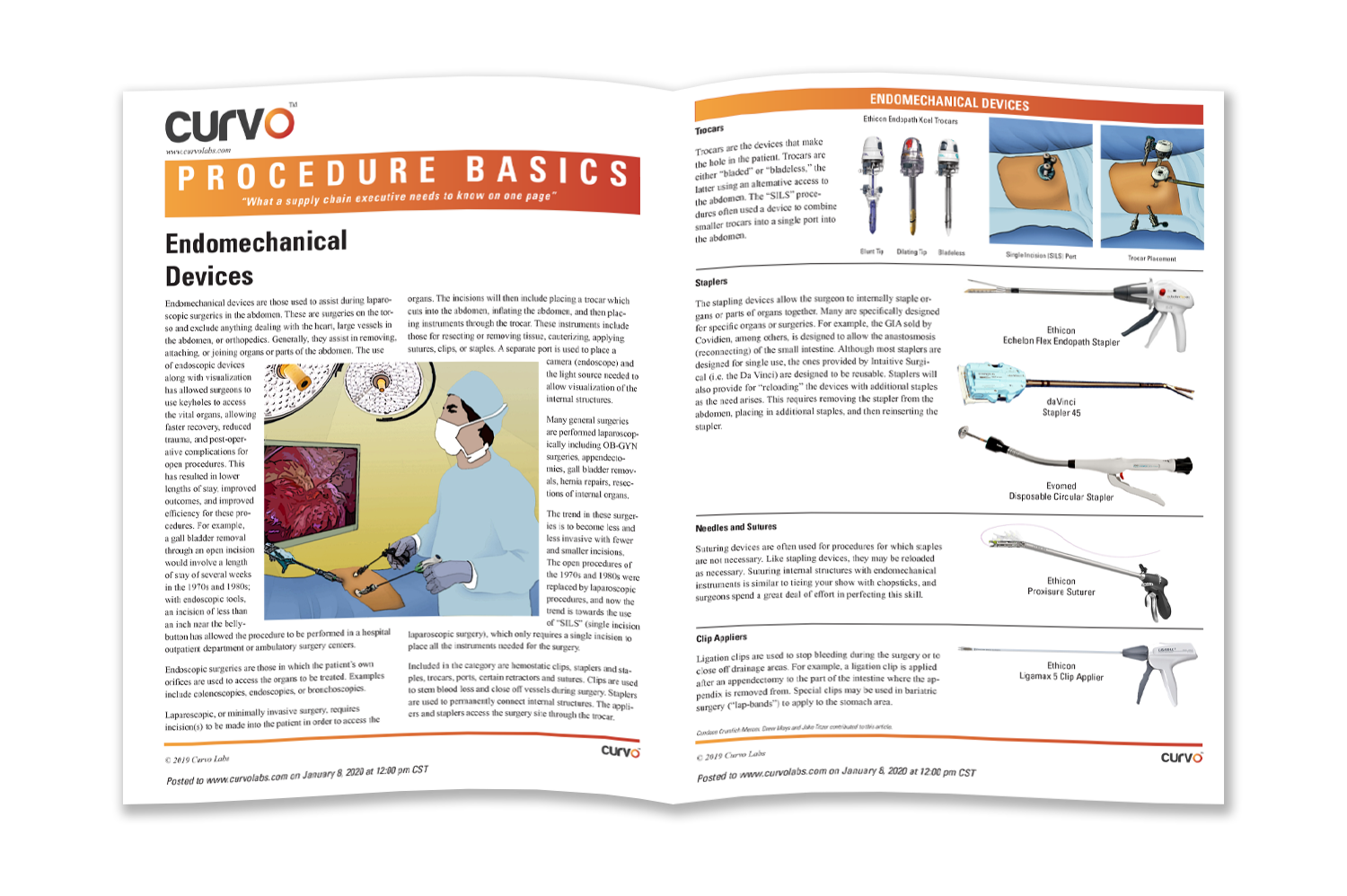
Endomechanical devices are those used to assist during laparoscopic surgeries in the abdomen. These are surgeries on the torso and exclude anything dealing with the heart, large vessels in the abdomen, or orthopedics. Generally, they assist in removing, attaching, or joining organs or parts of the abdomen.
How Endomechanical Devices Improve Patient Outcomes
The use of endoscopic devices along with visualization has allowed surgeons to use keyholes to access the vital organs, allowing faster recovery, reduced trauma, and post-operative complications for open procedures. This has resulted in lower lengths of stay, improved outcomes, and improved efficiency for these procedures.
For example, a gall bladder removal through an open incision would involve a length of stay of several weeks in the 1970s and 1980s; with endoscopic tools, an incision of less than an inch near the belly button has allowed the procedure to be performed in a hospital outpatient department or ambulatory surgery centers.
Overview of Endomechanical Procedures and Devices
Endoscopic surgeries are those in which the patient’s own orifices are used to access the organs to be treated. Examples include colonoscopies, endoscopies, or bronchoscopies.
Laparoscopic, or minimally invasive surgery, requires incision(s) to be made into the patient in order to access the organs. The incisions will then include placing a trocar which cuts into the abdomen, inflating the abdomen, and then placing instruments through the trocar. These instruments include those for resecting or removing tissue, cauterizing, applying sutures, clips, or staples. A separate port is used to place a camera (endoscope) and the light source needed to allow visualization of the internal structures.
Many general surgeries are performed laparoscopically including OB-GYN surgeries, appendectomies, gall bladder removals, hernia repairs, resections of internal organs. The trend in these surgeries is to become less and less invasive with fewer and smaller incisions. The open procedures of the 1970s and 1980s were replaced by laparoscopic procedures, and now the trend is towards the use of “SILS” (single incision laparoscopic surgery), which only requires a single incision to place all the instruments needed for the surgery.
Included in the category are hemostatic clips, staplers and staples, trocars, ports, certain retractors and sutures. Clips are used to stem blood loss and close off vessels during surgery. Staplers are used to permanently connect internal structures. The appliers and staplers access the surgery site through the trocar.
Trocars
Trocars are the devices that make the hole in the patient. Trocars are either “bladed” or “bladeless,” the latter using an alternative access to the abdomen. The “SILS” procedures often used a device to combine smaller trocars into a single port into the abdomen.
Staplers
The stapling devices allow the surgeon to internally staple organs or parts of organs together. Many are specifically designed for specific organs or surgeries. For example, the GIA sold by Covidien, among others, is designed to allow the anastosmosis (reconnecting) of the small intestine. Although most staplers are designed for single use, the ones provided by Intuitive Surgical (i.e. the Da Vinci) are designed to be reusable. Staplers will also provide for “reloading” the devices with additional staples as the need arises. This requires removing the stapler from the abdomen, placing in additional staples, and then reinserting the stapler.
Needles and Sutures
Suturing devices are often used for procedures for which staples are not necessary. Like stapling devices, they may be reloaded as necessary. Suturing internal structures with endomechanical instruments is similar to tieing your show with chopsticks, and surgeons spend a great deal of effort in perfecting this skill.
Clip Appliers
Ligation clips are used to stop bleeding during the surgery or to close off drainage areas. For example, a ligation clip is applied after an appendectomy to the part of the intestine where the appendix is removed from. Special clips may be used in bariatric surgery (“lap-bands”) to apply to the stomach area.
Download the full guide to Procedure Basics: Endomechanical Devices.

